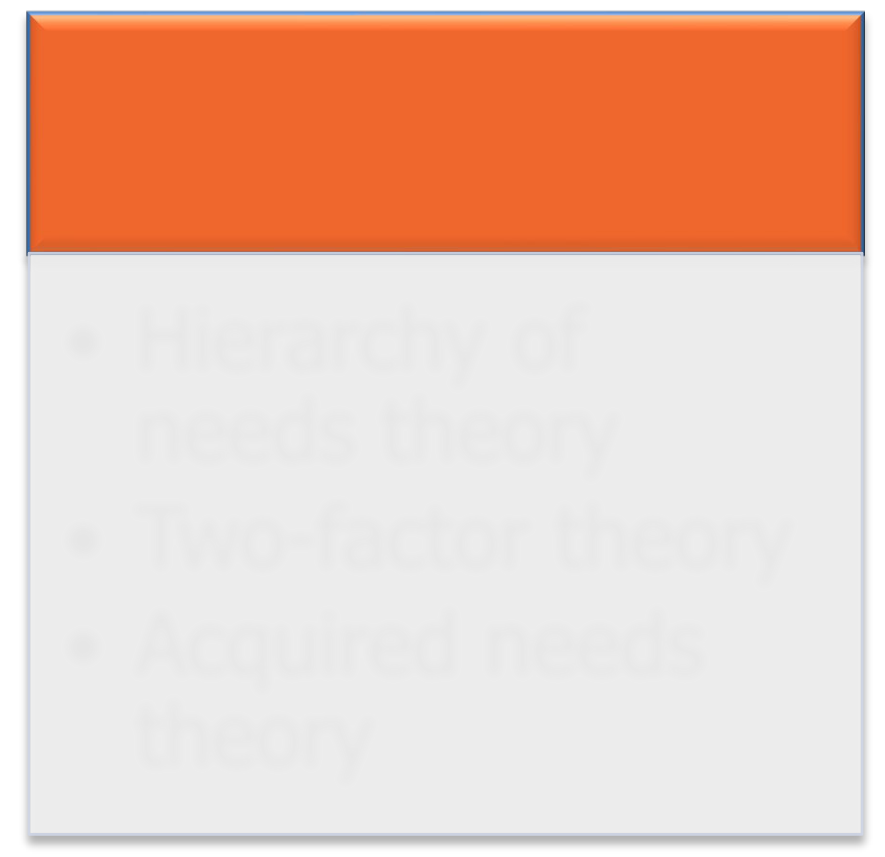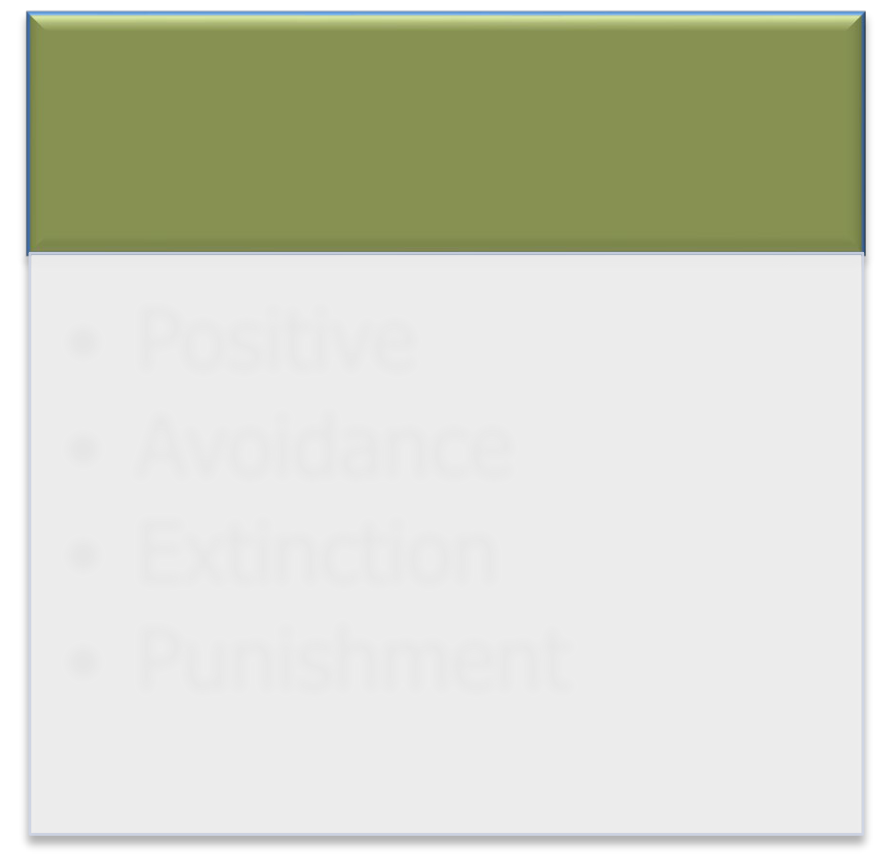Goal-setting theory goal-setting theory proposes that specific


Learning Outcomes
Leadership Behavior
• By the late 1940’s leadership research had shifted from trait theory paradigm to
behavioral theory paradigm.
with a certain product or service or otherwise on a password-protected website for classroom use. 3 - 3


o Consistent patterns of behavior characterize a leader.
© 2016 Cengage Learning. All Rights Reserved. May not be copied, scanned, or duplicated, in whole or in part, except for use as permitted in a license distributed
> The autocrat makes the decisions, tells
employees what to do and closely supervises workers.• democratic leadership style.


University of Michigan
> Employee-Centered Leadership Style has scales measuring supportive leadership and interaction facilitation.
See Exhibit 3.2.
Leadership Model
• Developed the Leader Behavior Description Questionnaire (LBDQ).
© 2016 Cengage Learning. All Rights Reserved. May not be copied, scanned, or duplicated, in whole or in part, except for use as permitted in a license distributed
with a certain product or service or otherwise on a password-protected website for classroom use. 3 - 7
• Applications:
> Self-assessment helps change behavior leading to more effective performance and relationships.
© 2016 Cengage Learning. All Rights Reserved. May not be copied, scanned, or duplicated, in whole or in part, except for use as permitted in a license distributed with a certain product or service or otherwise on a password-protected website for classroom use. 3 - 8
o Concern for people.
• The Leadership Grid identifies five
leadership styles: 1,1 impoverished; 9,1 authority compliance; 1,9 country club; 5,5 middle of the road; and 9,9 team leader.
Behavioral Theory Contributions
• Behavioral research led to the shift in
paradigm to contingency leadership theory.• A second contribution was the recognition that organizations need both production and people leadership.
Leadership and Motivation Theories
• Motivation is anything that affects
behavior in pursuing a certain outcome.




Process motivation theories
focus on understanding how
people choose behavior to
fulfill their needs.
© 2016 Cengage Learning. All Rights Reserved. May not be copied, scanned, or duplicated, in whole or in part, except for use as permitted in a license distributed with a certain product or service or otherwise on a password-protected website for classroom use. 3 - 12


Belongingness needs – also called social needs. 3.
4. Esteem needs – focuses on ego, status, self-respect. 5. Self-actualization needs – reach one’s full potential.
• The two-factor theory proposes that people are motivated by motivators rather than maintenance factors. See Exhibit 3.8.
> Maintenance factors are extrinsic motivators and include: pay, job security, working conditions and relationships.


Acquired Needs Theory
See Exhibit 3.9.
© 2016 Cengage Learning. All Rights Reserved. May not be copied, scanned, or duplicated, in whole or in part, except for use as permitted in a license distributed with a certain product or service or otherwise on a password-protected website for classroom use. 3 - 15
• The global marketplace allows for around the clock work causing work-life conflict.
• Two things organizations are doing:


Equity Theory
> Equity theory offers useful information:
o Equity is based on perception,


Expectancy Theory


Goal-Setting Theory
© 2016 Cengage Learning. All Rights Reserved. May not be copied, scanned, or duplicated, in whole or in part, except for use as permitted in a license distributed
with a certain product or service or otherwise on a password-protected website for classroom use. 3 - 19
2. Specific – The objective should state exact expectations.
3. Measurable – Must be observable and measurable.
> Participatively set – people who help set their objectives outperform
those who don’t – gains commitment.


Reinforcement Theory
© 2016 Cengage Learning. All Rights Reserved. May not be copied, scanned, or duplicated, in whole or in part, except for use as permitted in a license distributed
with a certain product or service or otherwise on a password-protected website for classroom use. 3 - 21
• Extinction:
> Withhold reinforcement when behavior occurs.• Punishment:
> Undesirable consequence.
• Continuous reinforcement:
> Every desired behavior is reinforced.• Intermittent reinforcement:
> When based on time – interval schedule.
© 2016 Cengage Learning. All Rights Reserved. May not be copied, scanned, or duplicated, in whole or in part, except for use as permitted in a license distributed with a certain product or service or otherwise on a password-protected website for classroom use. 3 - 23




Changing Behavior
• Giving praise creates a win-win situation.
• The steps in the giving praise model are (1) tell the employee exactly what was done correctly, (2) tell the employee why the behavior is important, (3) stop for a moment of silence, and (4) encourage repeat performance.
Content Motivation Theories
Process Motivation
Theories
| Motive | ||
|---|---|---|
| satisfy need |


Putting Motivation Theories Together
> Process Motivation Theories ask
o How do employees choose behavior to fulfill their needs?> Reinforcement Theory ask
o What can managers do to get employees to behave in ways that meet the organizational objectives?
• motivation
• motivation process
• Ohio State University leadership model
• process motivation
theories
• reinforcement theory
• two-factor theory
• University of Michigan leadership model
• writing objectives model
© 2016 Cengage Learning. All Rights Reserved. May not be copied, scanned, or duplicated, in whole or in part, except for use as permitted in a license distributed with a certain product or service or otherwise on a password-protected website for classroom use. 3 - 29
